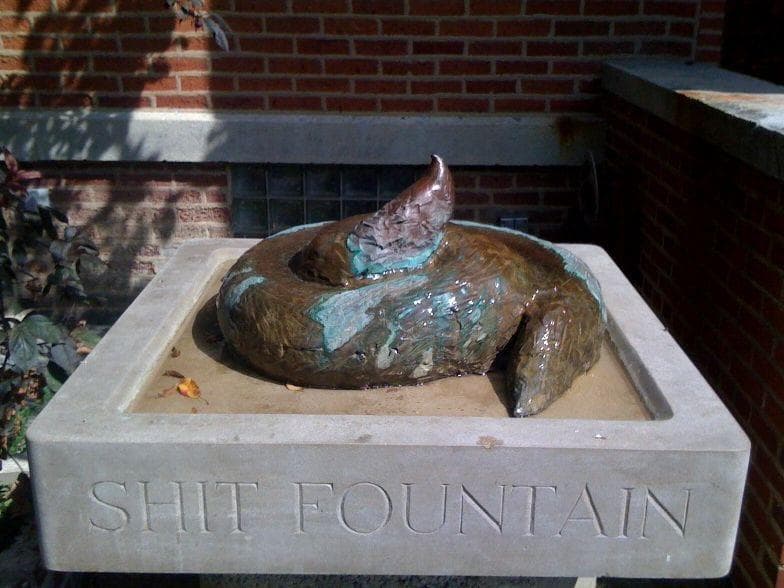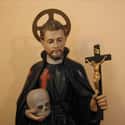-
(#1) If Saint Gennaro's Blood Doesn't Liquefy, It's A Bad Omen
Saint Januarius, known as Saint Gennaro in Italy, lived during the 3rd and 4th century CE. As a Christian bishop, Gennaro suffered persecution ordered by the Roman emperor Diocletian. According to legend, Roman guards tortured Gennaro and threw him into a furnace. He managed to escape unharmed, so the Romans beheaded him instead.
A slave named Eusebia kept a vial of his blood at the time of his death until the church named Gennaro a martyr decades later. Wanting to add the vial to his other sacred remains, Eusebia brought the dried blood to the procession of Gennaro's remains on its way to the Naples catacombs. While observing the event, she discovered the blood had returned to liquid form.
Ever since scholars started recording this phenomenon in 1389, archbishops have included the blood in semi-annual celebrations of Gennaro. If the blood goes from a solid to liquid state, then everything's fine. If the blood remains solid, though, people consider it a bad omen.
In the 20th century, Gennaro's blood stayed solid in 1939, when World War II began, and in 1980, when a large earthquake hit southern Italy. Gennaro's blood also remained solid in 2017, but the unfortunate event it heralded remains up for debate.
-
(#6) Saint Spyridon's Shoes Show Evidence Of Regular Use
Saint Spyridon lived in Cyprus from about 270 to 348 CE, working as a shepherd before becoming a bishop. According to legend, he explained the Holy Trinity to the Council of Nicaea in 325 by comparing the Trinity to a brick. As he spoke, water was said to miraculously drip out of the brick, with fire rising from the stone. Although Spyridon reportedly completed other miracles during his lifetime, his icon often depicts a flaming brick in one hand.
Three centuries after Spyridon died, his body was exhumed and moved to safety from invading Saracen troops. The exhumers discovered Spyridon's flesh remained well preserved, considering how long it had been buried, and it smelled like fresh basil. The relics received a home in a Corfu church and come out for viewings on his feast day.
People claim his shoes often look worn down as if he's been out walking, inspiring the priests to add a removable bottom to his coffin for easier access when changing the saint's footwear.
-
(#14) Saint Camillus's Preserved Heart Inspires Caring In Others
As a young man, Saint Camillus reportedly suffered from a gambling problem and worked as a soldier of fortune - not typically the lifestyle choices of a saint. He also possessed healing power, however, and devoted his later life to helping others.
Camillus became a hospital worker and inspired others to care for the sick and injured through his compassionate example. The caregivers who followed in his footsteps founded The Ministers of the Sick or the Infirm, also known as the Camillians, and wear white robes with a large red cross decorating their chest.
When Camillus died, his followers removed his heart as a relic. They noted it was still a healthy shade of red and beautiful looking. They enclosed it in a glass display and kept the heart in a former infirmary room, which later became a chapel. The Camillians occasionally send the heart on tours through their churches in other countries, inspiring their followers to care for others.
-
(#3) The Head Of Saint Catherine Turned Into Roses
Born in 1347, Saint Catherine became a nun at a young age. She experienced visions of Jesus throughout her life, including one where he gave her a wedding ring made from his foreskin. A priest claimed he once saw Catherine levitating, and stories describe her receiving a stigmata at age 28. When she died in Rome five years later, she received a burial in the city - but citizens in her hometown of Siena wanted her buried there.
Since sneaking an entire body past Roman guards would be difficult, they removed her head and placed it in a sack. According to stories, Roman guards stopped the group of Siena citizens, but when they looked in the bag, Catherine's head transformed into rose petals. The guards allowed the group to pass and return to Siena where Catherine's head miraculously regained its original shape.
The head is currently displayed in the Basilica of San Domenico. And although her body remains in Rome, her ribs, a foot, and other body parts are showcased elsewhere in the world.
-
(#12) The Body Of Saint Mark Saved A Ship From A Storm
Saint Mark the Evangelist, follower of Jesus and New Testament contributor, founded an orthodox church in Egypt before his death in 68 CE. The people of Alexandria buried Mark's body in Egypt, but when Christians in Venice discovered an Alexandrian khalif had plans to destroy Mark's relics more than 800 years later, they decided to steal the body. A pair of Venetian merchants traveled to Alexandria and persuaded two monks guarding the body to swap it with another.
The merchants hid Mark's stolen body on board their ship and, according to legend, the ship experienced several miracles attributed to Mark during their journey to Venice. The saint's body reportedly helped the boat narrowly escaped destruction in a storm, exorcised a possessed man in Istria, and made the trip home abnormally quick. When they arrived in Venice, Mark's body suddenly became too heavy to move, forcing followers to build San Marco's Basilica around him.
-
(#9) Saint Stephen's Right Hand Didn't Decompose With The Rest Of His Body
The first monarch of Hungary, King Stephen I, became a saint after he died in 1038. When people exhumed Saint Stephen's body years later to move it to a safer spot, they realized his right arm did not decompose like the rest of his body. People saw this as a miracle and removed the arm for preservation.
Saint Stephen's arm became known as "The Holy Right," and at one point, a group of Croatian monks cut the hand off from the rest of the arm while they were guarding it, further splitting up the relic. The clenched hand now resides at the Basilica of St. Stephen in Hungary, enclosed in a case and draped with jewels. Some question the authenticity of the relic, since the original wore a ring and the displayed hand lacks a mark indicating a ring was ever there.
New Random Displays Display All By Ranking
About This Tool
Faith is the return of the soul, the reverence and worship of life. For this reason, our ancestors expressed their reverence for life with a kind of respect for God. Religious beliefs provide guidance when human knowledge and abilities are limited, and many people are also used to explaining strange and unexplainable phenomena surrounding religious relics in the name of gods.
There are many mysterious ancient religious relics all over the world, and they frequently appear in many novels or historical records. These fascinating religious relics are of great significance to devout believers. The random tool described 14 weird phenomena surrounding religious relics that can not be explained till today.
Our data comes from Ranker, If you want to participate in the ranking of items displayed on this page, please click here.















